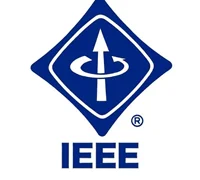دانلود ترجمه مقاله یک چارچوب اطلاعاتی برای سرویس های اینترنت اشیا
| عنوان فارسی |
یک چارچوب اطلاعاتی برای سرویس های اینترنت اشیا در اینترنت فیزیکی |
| عنوان انگلیسی |
An Information Framework for Internet of Things Services in Physical Internet |
| کلمات کلیدی : |
اینترنت اشیاء (IoT)، اینترنت فیزیکی، شبکه حسگر بی سیم، RFID، M2M، معماری خدمات محور (SOA) ، طرح سه بعدی |
| درسهای مرتبط | اینترنت اشیا (IoT) |
| تعداد صفحات مقاله انگلیسی : 11 | نشریه : IEEE |
| سال انتشار : 2018 | تعداد رفرنس مقاله : 37 |
| فرمت مقاله انگلیسی : PDF | نوع مقاله : ISI |
|
پاورپوینت :
ندارد سفارش پاورپوینت این مقاله |
وضعیت ترجمه مقاله : انجام نشده است. |
1. مقدمه 2. زیرساخت IOT برای اینترنت فیزیکی 3. معماری خدمات محور برای IoT 4. مدیریت π کانتینترهای ترکیبی: یک مطالعه موردی 5. نتیجه گیری و کارهای آتی

چکیده – مفهوم اینترنت فیزیکی (PI یا π)، برای پرداختن به مسئله عدم پایداری فعلی سیستم های لجستیک، توسعه یافته است. عناصر فیزیکی کلیدی در PI شامل π-محفظه ها، گره های π، و متحرک های π می باشند. محفظه های π یا π-محفظه ها، بگونه ای طراحی شده اند که به استاندارد جهانی تبدیل شوند، هوشمند، سبز و مادولار (پیمانه ای) باشند و در کل یک زیرساخت لجستیک جهانی باز حمل و نقل و ذخیره شوند. در عین حال، گره های π و محرک های π شامل سیستم ها و وسایل نقلیه فیزیکی هستند که برای بهره گیری هرچه بهتر از مشخصات محفظه های π برای تسهیل فرآیندهای جابجایی مواد، طراحی شده اند. بنابراین، چشم انداز صنعت لجستیک یک بازیگر کلیدی است که هدفش بهره گیری از انقلاب «اینترنت اشیاء» (IoT) می باشد زیرا میلیون ها کانتینر یا محفظه π با محموله های شامل شده بوسیله یک سری گره های π و متحرک های π هر روزه، جابجا، ردیابی و ذخیره می شوند. این مقاله، ابتدا یک چارچوب اطلاعاتی ممکن ساز IoT مربوط به زیرساخت PI را ارائه می دهد و سپس یک معماری خدمات محور برای IoT بکار گرفته شده برای فراهم کردن خدمات لجستیک IoT برای PI را پیشنهاد می دهد. یک مطالعه موردی با بکار گیری این معماری ارائه می شود تا کارآمدی خدمات مدیریت کارآمد عملیات های لجستیک در PI اثبات شود. مقدمه: سیستم لجستیک فعلی هنوز از نظر اقتصاد، محیط زیست و جامعه، غیر پایدار تشخیص داده شده، علیرغم چندین الگوی لجستیک نوین همراه با پروژه های پیشنهادی و انجام شده برای معکوس کردن این وضعیت. لجستیک هوشمند با بهره گیری از مفاهیم هوش به لطف تلفیق فنآوری اطلاعات و ارتباطات (ICT) پیشرفته برای بهبود قابل توجه بازده کلی از نظر امنیت، مدیریت جریان اطلاعات، اتوماسیون فرآیندها، می باشند. یکی از عوامل کلیدی چنین چشم انداز لجستیک، سیستم حمل و نقل ناوگان هوشمند است که از آخرین فنآوری ها، زیرساخت ها و خدمات و همچنین عملیات ها، روش های برنامه ریزی و کنترل برای انتقال کارآمد محموله ها و ناوگان استفاده می کند [1].
The physical Internet (PI, or π) concept was developed to address the current unsustainability problem of logistics systems. The key physical elements in the PI include π-containers, π-nodes, and π-movers. The π-containers designed to be world-standard, smart, green, and modular are moved, handled, and stored throughout an open global logistic infrastructure. Meanwhile, the π-nodes and π-movers including physical systems and vehicles are designed to exploit as best as possible the characteristics of π-containers to facilitate material handling processes. Thus, the logistics industry vision is a key player poised to benefit from the Internet of Things (IoT) revolution since millions of π-containers with contained shipments being moved, tracked, and stored by a variety of the π-nodes and π-movers each day. This paper proposes first an information framework enabling IoT of the PI infrastructure and then a service-oriented architecture for the IoT applied for providing the IoT logistics services for the PI. A case study utilizing the architecture is presented to illustrate an efficient management service of logistics operations in the PI. INTRODUCTION: The current logistics system is still recognized to be unsustainable in terms of economy, environment and society despite several innovative logistics paradigms accompanying projects have been proposed and undertaken to reverse the situation. The intelligent logistics exploiting the intelligence concepts thanks to the integration of advanced information and communication technology (ICT) to improve the overall efficiency significantly in terms of security, physical flow management, automation of processes. One of key factors of such logistics vision is intelligent freight-transportation system that uses the latest technologies, infrastructure, and services as well as the operations, planning and control methods to efficiently transporting freight [1].


دیدگاهها
هیچ دیدگاهی برای این محصول نوشته نشده است.